- Home
- slideshows
- miscellaneous
- The best fishing lures and flies you can buy
The best fishing lures and flies you can buy
The best hard plastics for saltwater and freshwater fishing

The best soft plastics for freshwater
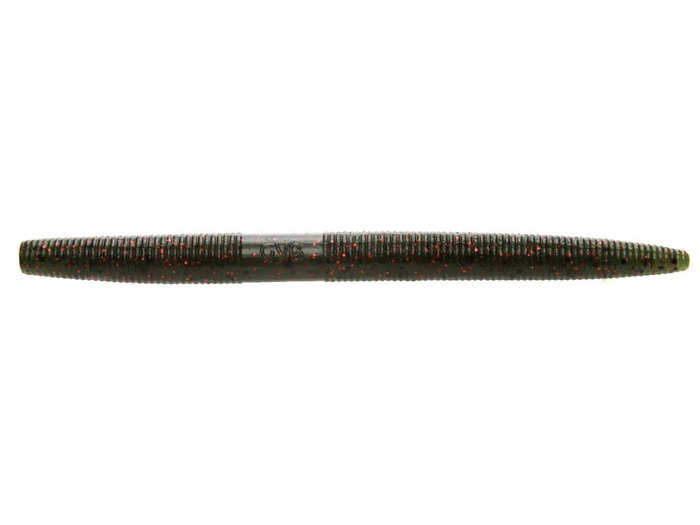
The best ones in the freshwater world right now, in my humble opinion (though Bassmaster and Wired2Fish agree), are Gary Yamamoto's Senkos, which are wobbly, slug-like cylinders with some weight, so they're easy to cast, and sink in a beautifully enticing manner without requiring the added (and expensive) steel weight. While these are relatively pricey even without having to buy weights, they tend to last a little longer.
The whole Yamamoto line offers just about everything you'd need in freshwater, along with a bit of inshore saltwater tackle as well. What I like most about these lures is that almost all of them (and especially the Senko) do the work for you, and you may find that the less you do in terms of "working," or bouncing these soft plastics along in an attempt to make them look more lifelike, the more bites you get.
In a pinch, I'll reach for any old brand, figuring fish will chew them to bits so it doesn't much matter how durable they are, as long as they work. My favorite worms on a budget are Culprit's 7.5-inch Tequila Shads. They're certainly cheap enough, and while they break up after a little while, there are 18 to a pack, which should easily last you a day if not a season.
Both of these soft plastic worms I've mentioned are best fished with a Gamakatsu worm hook; I like a slanted 3/0, which tends not to end up down a fish's throat and/or in its gut like straight ones can.
Pros: Weighted, extremely effective on largemouth bass
Cons: Pricier than the average worm
Buy the Gary Yamamoto Senko worms (in packs of 10) on Amazon starting at $4.49 Shop the whole Gary Yamamoto line on Amazon Buy the Culprit 7.5-inch Tequila Shad worm (in packs of 18) on Amazon for $5.95 Shop the whole Culprit line on AmazonThe best soft plastics for inshore saltwater
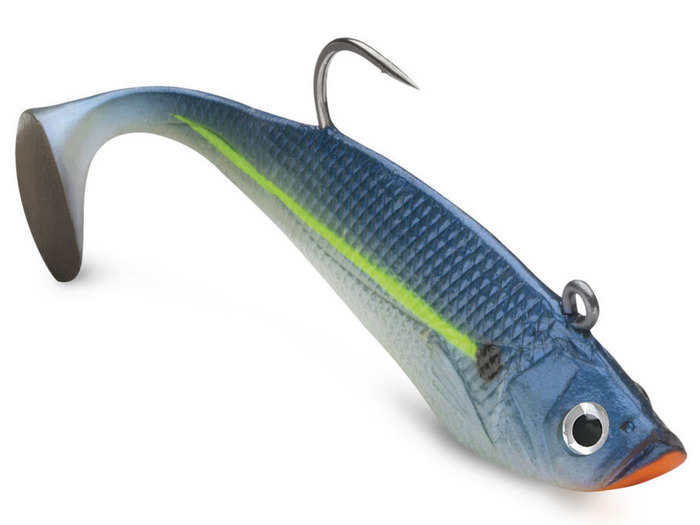
Saltwater is a whole different arena. Crabs, shrimps, and other crustaceans drive a lot of lure design, as do cephalopods like squids and octopi. And, of course, the fish tend to get a whole lot bigger, which means the baits do too. By and large, the price tags also correlate.
I'll often try to scour the used section of my local tackle shop if I can, which helps, but I often don't find what I need. Inshore, I'll generally reach for anything from the Storm-branded lures line. A younger company, Storm entered the market with affordable lures with high performance. No, they're not made from balsa wood, but they're balanced and, far as my human eyes can tell, nearly as lifelike as Rapalas. It also doesn't hurt to note that Rapala recently purchased the brand.
Storm also has a series of swimbaits called the WildEye, which aren't nearly as durable (fish with teeth tend to rip the tails off and render their action useless), but they're lifelike and are highly effective without much angling finesse. In other words, all that takes to make these things work is cast, retrieve, repeat.
Pros: WildEyes and Chug Bugs are effective on a wide variety of fish, both fresh and salt (size down for freshwater, generally)
Cons: Wildeyes' tails get bitten off frequently; Chug Bugs' hooks are worth changing out, especially when pursuing larger fish in the brine
Buy Storm WildEyes from Rapala starting at $3.99 at Rapala Buy Storm Rattling Saltwater Chug Bugs from Rapala starting at $9.49 at RapalaThe best surface lures
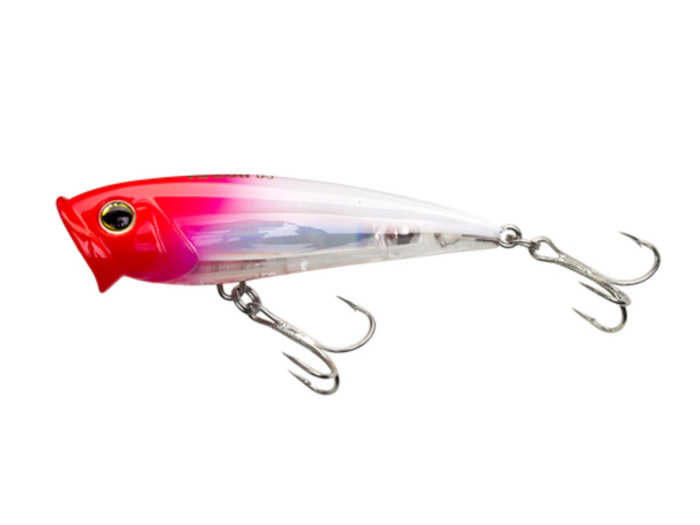
Surface lures can get expensive, but they are arguably the most fun to fish. There are a few things that make surface lure design expensive. Like all lures, they need to be weighted evenly, but they also have to disperse a certain amount of water to do their job. And, generally speaking, they have to float well (to that point there are some exceptions). For the job, I prefer a hard plastic lure.
Yo-Zuri makes some of the world's most beloved hard plastic lures, thanks in large part to their Acrylonitrile Butadiene Styrene (ABS) resin coating that makes them almost indestructible. The inner hologram sheet, which reflects light in a way that imitates baitfish scales, gives the brand's lures high visibility, even after the ABS resin has been thoroughly scratched. These lures aren't cheap, but they'll withstand a lot. These lures are a sound investment unless your fishing skills are dubious.
Yo-Zuri's lures are also a little more lifelike than a lot of others. A ton of attention is paid not only to specific patterns on fish (stripes on mackerel and spots on herring, for example) but also to the eyes. It's hard to say how much all this matters when we can often catch fish on little more than a feather and a stainless steel hook, but it's hard to imagine it hurting all the same, and there's a reason the brand is still at it after all these years.
The company's lures are also weighted, so they're easy to cast and they balance with a little more ballast than cheaper options, which can often make a big difference, especially when conditions are calm and fish have a little more time to assess a lure.
On the other side of the spectrum, you'll find the Storm lures. They're made with a lower-grade plastic and no resin, the finish will start to come off after a few good whacks from fish. Since I began using Storm top-water lures about 15 years ago, I think I've caught more large (20-plus pounds) saltwater fish with the brand's Rattling Saltwater Chug Bug than with any other lure. It's a balanced and durable lure (i.e., it's survived being obliterated by toothy fish and repeatedly cast into stone walls) with precise action. It waddles back and forth, displaces a formidable amount of water with as little effort as possible (some lures are a workout), and, as I said, it catches fish.
It was much more affordable before Rapala acquired the Storm brand, but that's a true sign that Storm was becoming a formidable competitor.
Pros: Yo-Zuri makes everything you need to catch most sportfish, lifelike, brilliantly balanced
Cons: Expensive
Buy the Yo-Zuri top-water lures on Amazon starting at $6.77 Buy the Storm Chug Bug from Rapala starting at $8.99The best place to buy flies online
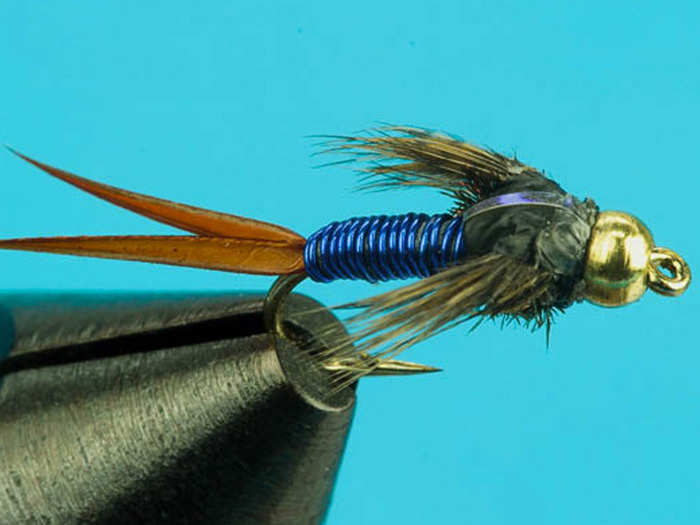
You really don't want to cheap out on flies. Such fine, detail-oriented contraptions require a meticulous hand. If you opt for cheap, factory-made flies, you'll find that they often fall apart on the first use. Collectively, cheap, lightweight thread, skimpy portions of cement or glue, and little to no oversight don't bode well. Suffice it to say it's a good idea to stay away from Walmart, Dick's, or Cabela's for flies. I've found all this out the hard way, and while there might be exceptions, you'll put yourself through a good deal of hard-earned spending and learning.
The best way to get your flies is to go down to your local fly shop if you have one. But, if you already know what you need, or local prices are too prohibitive, there is one online retailer that I trust: Big Y Fly Co.
Pro tip: A good trick when buying (or tying) any flies is to apply an extra dab (or coating, depending on the fly) of head cement, or even just clear nail polish or nail hardener. Flies can take a thrashing, both from fish and, say, rocks and trees (the latter depends on how good of a caster you are).
Like with any lure (but maybe especially with flies), wash them with a generous helping of fresh water after use, especially if you've been fishing in salt water, and your lures will live much longer. Salt is bad for any kind of hook, but it dries out hair and feathers, and they'll become brittle and start to break off.
There is a cacophony of views on the matter over at Reddit (here and here), and one expert at Field & Stream commends Big Fly Co. when discussing the pros and cons of buying flies online.
Ultimately, you should learn to tie your own flies. It will save you money over time, but it will also teach you more than you could possibly ever learn otherwise about the fish you pursue. Orvis makes a kit that is very good and reasonably priced.
Pros: Affordable, wide selection
Cons: Only that you'll have to wait for delivery
Shop all flies at Big Y Fly Co. Buy Fly Tying Starter Kit from Orvis for $158The best bucktail jigs
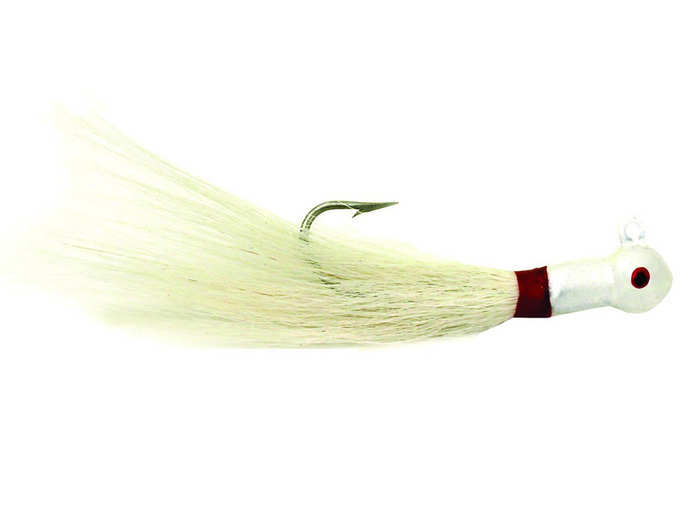
You can spend a whole lot of money on a bucktail jig if you choose to, but this quite possibly ancient lure needs no frills to get its job done, and I can't tell you how many fish (and how many different species) I've pulled in using nothing but a white and red Sea Striker bucktail.
It is also among the more versatile fishing lures around. Fish it fast or slow anywhere in the water column, or add on a strip of squid, a small minnow (live or dead), or a (very dead) soft plastic, and you can drift or bounce and retrieve it along the bottom for any number of species that might be lingering thereabouts.
You won't find too many reviews of Sea Striker lures because they've been around so long that they're ubiquitous, but Sport Fishing Magazine included the brand in a recent roundup of the best metal jigs.
My only disclaimer is that at the end of a long season of use and abuse (it's best to rinse all lures clean after use, but that doesn't always happen), you might notice that the bucktail is falling apart. Get yourself a small kit of thread and a fly-tying vise, along with a patch of dyed bucktail, and repairs are a cinch (tip: use a little clear nail polish or clear cement to seal your threading).
And, for some lighter-weight, higher-end jigs, which can pay off in dividends in skinny water where fish are more spookish and selective, check out Angler's Ammo. They make various shapes and sizes that work well with bonefish and other inshore species where delivery is key.
Pros: Affordable, tried and true
Cons: They'll fall apart after a while, especially if you don't rinse them after use
Shop Sea Striker Bucktail Jigs (and pick out your preferred color and weight) on Amazon, starting at $4.76 a piece or $11.99 for a six-pack Shop all jigs at Angler's Ammo starting at $2.25The best soft plastics for offshore and big game
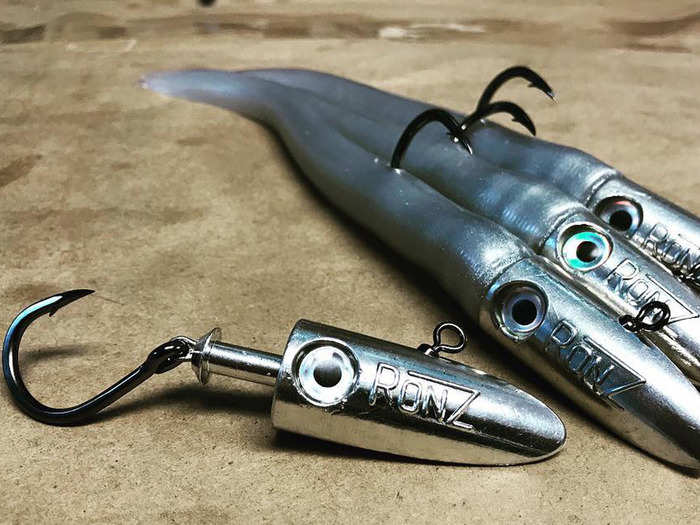
RonZ makes ultra-heavy-duty plastic baits meant for long casting and heavy abuse from some of the biggest fish in the sea.
I've caught fish in the 200-pound range on one, with neither hook nor soft plastic showing any sign of strain. Just make sure to go for the "4X" hook design, which is made with a swivel, rather than a through-wire hook, which, despite being moderately strong, will bend and break.
The best thing about RonZ lures, apart from the durability, is how fast they sink while still maintaining a lifelike action. The fish I caught came up for the lure while it was dropping down to about 100 feet and I was doing literally nothing. A lure that fish will hit when you're idle on your end, is a good lure, but one that can repeatedly survive being smashed by giant tuna is a great lure.
What helps is that these are not terribly expensive lures in the big scheme of things. They're far less costly than most trolling lures, and they require much less material and attention to produce than fancy surface plugs.
If you're going fishing anywhere there are squid or long thin bait fish like mackerel, eels, or herring, you probably will appreciate having a few of these in your tackle box. Just make sure to size them accordingly to the species (and size) trying to imitate.
One captain I've fished with, Dom Petrarca of Coastal Charters Sportfishing, swears by them, and currently holds the spinning rod and reel world record for bluefin tuna. On 360Tuna, a tuna fishing forum, he also claims he's done well by slow-trolling them at less than 3 knots. I haven't tried trolling them yet, but knowing that he does, I will now.
Even if you don't have a clue about what you're doing out there, having a kit full of RonZ lures will give you a much better chance of hooking up out there.
Pros: Relatively affordable, highly versatile
Cons: You'll have to replace the tails every so often if you're catching a lot of fish (but that's a good thing)
Shop RonZ lures on Amazon starting at $5.99What else we considered
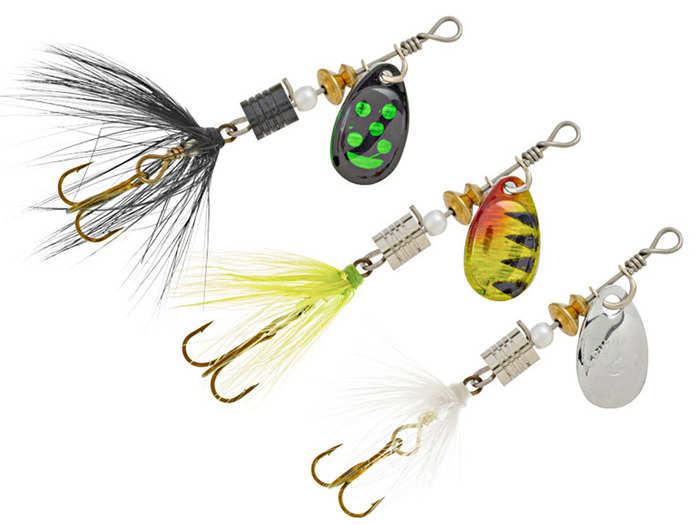
In my two-plus decades of fishing, I've bought just about everything there is to buy, from thumbnail-sized spinners for panfish and largemouth bass to trolling lures the length of my forearm. I've also tried to cheap-out as best I could (this can be an expensive addiction). As long as you're not making a habit of losing lures (don't), buy better equipment and it will last longer. Especially if you tie your lures onto fishing line you can trust.
- Berkeley: Berkeley makes just about everything related to fishing there is, but I've found that to come at a cost. What the brand seems to do best is, apart from fluorocarbon fishing line, a brand of artificial baits and attractants collectively called "PowerBait," soaked in a scent that you might not appreciate all that much but many anglers swear by. Author's note: Just don't spill this stuff or you'll be sorry.
- Blue Fox: Blue Fox is a brand between South Bend and Storm, primarily specializing in smaller freshwater game. The brand produces good lures within a reasonable price range, but its array wasn't diverse enough for us to widely recommend.
- Strike King: Strike King is a higher-end brand that crafts freshwater-centric lures at a premium, but not unlike Yo-Zuri or Rapala, they're top notch. The only setback, as with both aforementioned brands, is the price. Again, it's worth it if you'll be doing a lot of freshwater fishing, have the dough, and really want to catch fish. I've found the brand's hard-plastic lures to be particularly productive on deep-dwelling bass and pike.
- South Bend: It can be difficult to gauge which brands are good and which ones aren't. There are some, like South Bend, which had been notoriously high-quality, first-rate lures for nearly a century before they dropped off into the lower end of the market and started making tons of junk. They'll catch fish, but only for so long. Hooks will break, holograms will peel off, and through all of it, you'll lose opportunities to catch fish, which is the point of fishing, remember. A few dollars more will go a long way over time.
- Storm: Then there are brands like Storm, which we recommend above for specific lure types, and which came, ostensibly, out of nowhere. The brand started out being inexpensive, and I'd find Storm lures on Walmart shelves for $2-$4 all the time. I lucked out: Most of what I bought worked and withstood a beating, and I kept buying them. The next thing I knew, Rapala had bought the company and its prices had doubled. Still, it's a relatively affordable option for many angling pursuits. I'm still using the brand's lures that I bought 15 years ago, and they're still catching fish. (It should go without saying that I'm an excellent angler. Ask anyone.)
Sure, there are many more brands, including many more good ones we have left to test. The above, however, are among the best of the more popular ones we know and use at the moment, and we'll stand by them until something better comes along.
Check out our other fishing-related guides
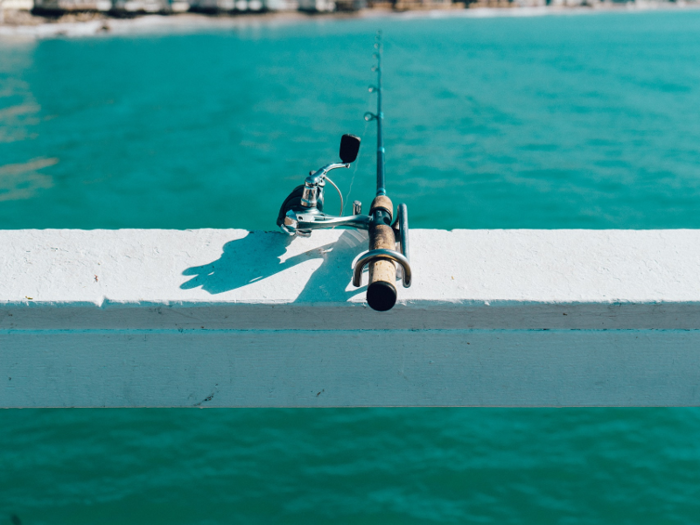
The best, most versatile setup for most anglers, whether they fish in freshwater or salt with bait or artificial lures, is a simple spinning rod and reel. After testing dozens of spinning rods and reels over the years, my favorite all-around affordable combination is an Ugly Stik Elite rod paired with a Daiwa BG reel. You can spend more on a spinning rod and reel, of course — a lot more — and you can find rods and reels for more specific applications, but it's hard to beat this rugged pairing anywhere south of $200. Here are our top picks for the best fishing rods and reels:
- Best overall: Ugly Stik Elite spinning rod and the Daiwa BG spinning reel
- Best trout/freshwater fly rod and reel: Orvis Clearwater II package
- Best saltwater fly rod and reel: Temple Forks Outfitters Clouser 9-Weight with the Redington Behemoth fly reel
- Best bait and bottom fishing rod and reel: Tsunami Airwave Elite spinning rod with the Shimano Baitrunner D spinning reel
- Best trolling rod and reel: Shimano TLD trolling rod and reel combo
- Best rod and reel for deep-sea bottom fishing: Tsunami MH Slow Pitch Jigging/Casting Rod and the Shimano TLD conventional reel
More than even a rod and reel, fishing line is an essential part of your kit. Anglers have survived millennia without fancy rods and reels, and the best of which are useless without trusty line. You get what you pay for, and cheap fishing line almost inevitably ensures disaster. Momoi's Hi Catch monofilament is our top pick for most anglers because we've found it to be the most memory-free, tangle-resistant, and user-friendly fishing line around. Here are my favorite widely available fishing lines in each of the three most popular materials, which admittedly all come along with their advantages and disadvantages:
- Best fishing line overall: Momoi's Hi Catch monofilament
- Best fluorocarbon fishing line: Berkley Vanish
- Best braid fishing line: PowerPro Spectra
- Best freshwater fly line: Rio's Perception Fly Line
- Best saltwater fly line: Rio's InTouch OutBound Coldwater series
We also break down what other kinds of tackle you need for fly fishing and recommend a great guidebook on how to tie knots.
The best sun shirts you can buySun shirts have never really been an interest where the style-savvy are concerned. They're sporty, synthetic, and generally emblazoned with hideous logos, and I too am guilty of having pooh-poohed them. But we've had decades now to process the grim reality that even our beloved sun can give us cancer, and I for one am tired of getting sunburned through the old, tattered shirts I have always tried to wring a second life out of by wearing while fishing.
I, like many of you, do not enjoy slathering sunscreen all over my torso and making myself into a greasy mess for the day just to ward off UV rays. Moreover, sunscreen is expensive, especially if you tend to use a good, chemical-free mineral-based sunscreen, and find yourself in the sun often. Here are our picks for the best sun shirts with UPF protection:
- Best sun shirt overall: Hurley QuickDry
- Best hooded sun shirt: Patagonia's Men's Sun Shade Technical Hoody
- Best cooling sun shirt: Columbia's Solar Shade UPF
- Best sun shirt for cooler weather: O'Neill 24/7 Hybrid UPF
- Best button-up sun shirt: Columbia's PFG long sleeve
- Best stylish sun protection clothing for women
The best polarized sunglasses for you are going to vary based on the shape of your face and the activities you plan to engage in. Poorly designed ones often leave our retinas exposed to harmful UV rays that can lead to macular degeneration, cataracts, and myriad other troubles down the line. Here are our top picks for the best polarized sunglasses you can buy:
- Best overall: Ray-Ban Clubmasters with aluminum frames
- Best budget: Gamma Ray Polarized Cheaters and Wrap Around Sports
- Best for the great outdoors: Smith Optics ChromaPop
- Best sustainable: Costa x Bureo's Untangled collection
- Best prescription option: Warby Parker prescription sunglasses
Popular Right Now
Popular Keywords
Advertisement